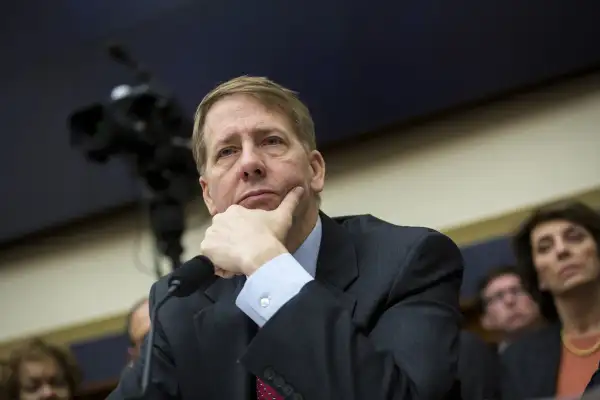Financial Industry Attempting to Muzzle its Consumer Watchdog Agency in Court

In the debris following the financial crisis, the Dodd-Frank Act established the Consumer Financial Protection Bureau in 2010, consolidating consumer protection into one agency from a byzantine system of 10 organizations ostensibly sharing the load.
The format of this agency took a different shape than other watchdog agencies like the Securities and Exchange Commission. Instead of a committee, the agency's power is centralized on a single director, appointed by the president for a five-year term. This is supposed to promote swift action instead of bureaucratic stagnation, and it has. In the wake of its 10 predecessors long nap at the wheel, which caused the financial crisis, the bureau has fielded almost 800,000 complaints and collected $11 billion in restitution for consumers.
But while supporters see the bureau's executive power as a feature, pointing to the bureau's ability to apply corrective force against financial malfeasance in a manner much more efficient than the SEC, its conservative detractors lament so its director's concentrated power.
This aspect of the agency was controversial when it was established, and it's only grown more contentious, after a flawed algorithm for determining racist housing practices was outed and not corrected. And now, due to a new court case brought by a lender, the bureau's power will finally come to a head—in court.
In late 2014, the CFPB fined New Jersey lender PPH Corp around $6 million for an unscrupulous "kickback" system between mortgage issuers, a system that took advantage of the average borrower by raising their mortgages. Following the fine, PPH took the CFPB to court, and the matter was kicked up from an in-house CFPB judge to its director Richard Cordray—who revised the fine by adding another $107 million to rectify the wrongdoing. According to the Wall Street Journal, Cordray's motivation to intensify the fine stemmed from a desire for more accountability after the financial crisis.
Naturally, the lender has appealed the massive fine increase, and the case has become the face of the issue between the CFPB and its critics who decry its sharp executive power—or benefit from its declawing. The case has tumbled to the D.C. Circuit Court of Appeals and has a hearing on April 12.
A ruling against the bureau could be a huge step in forming a critical mass to geld the agency. "If the court rules against the bureau, the calls for a change to its leadership structure will intensify,” Isaac Boltansky, an analyst for Compass Point Research & Trading, an investment firm specializing in financial services told the Journal.
As the Journal notes, the case's particulars involving the lender and the CFPB are all but agreed upon. PHH sent buyers to certain mortgage issuers, who steered them toward a certain option, a scheme that benefited PHH to the tune of "hundreds of millions of dollars." The difference of opinion is just over the size of the wrist-slap, which is much bigger than precedent. But precedent is precisely what the CFPB's creation attempts to avoid, and attempts to dismantle the agency's power could throw the proverbial baby out with the bathwater.